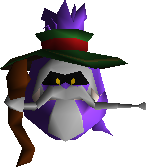Here's what I deduce about the Cetra from the information in the game: they looked exactly like ordinary humans because they were the ancestors of ordinary humans. Ordinary humans are descended from the Cetra who decided to settle down, and who, in given up their wandering ways, lost their connection with the planet. Ifalna is 100% Cetra and she looked exactly like a human being, because the Cetra weren't actually another species, they were just human beings who could commune with the Planet.
All those crazy, special powers Shinra thought the Cetra had were entirely in Shinra's imagination. The Cetra didn't have any special powers, except for the power to talk to the planet. And I think it's implied in the game that, in fact, any human being can communicate with the planet, if they dedicate themselves to this task. The cry of the planet is not inaudible to Cloud, Tifa and the others when they're at Bugenhagen's lab. They recognise it as the sound of a creature in pain.
The struggle for dominance between nomadic societies (Cetra) and settled agricultural societies (humans) is a recurring theme in human history. It is commemorated in the Bible by the story of Cain and Abel - Cain is the settled farmer and Abel is the nomadic shepherd, and God prefers Abel. So the idea of nomads being more "in touch with divinity" than settled farmers is a very old one. The Mongols were another nomadic society who came into conflict with all the settled societies around them. So to be, this ancient conflict is what the Cetra/human divide represents, and just as in our world, the humans have triumphed and driven the nomads almost to the point of extinction.






